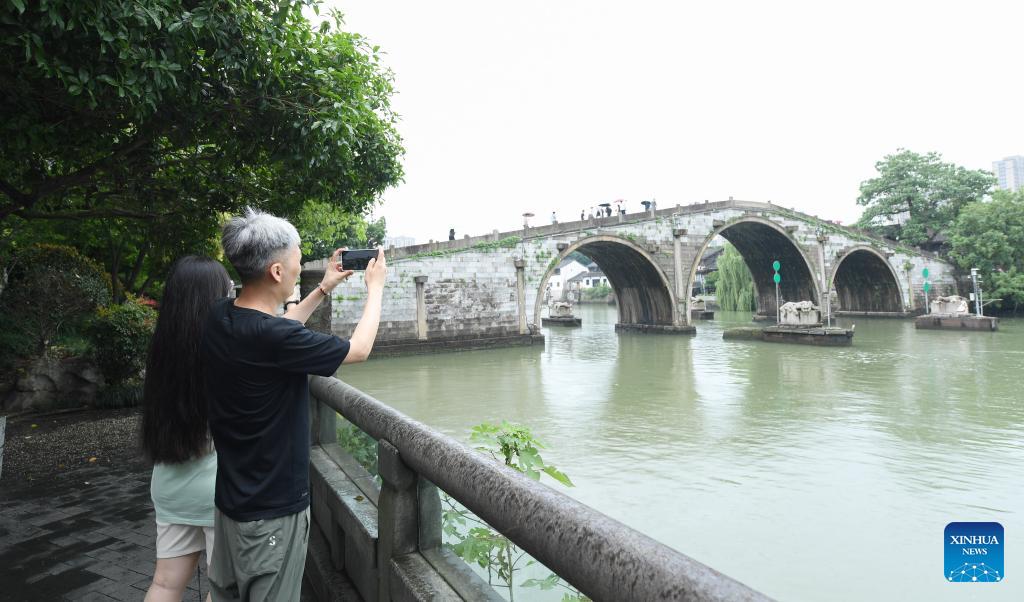
 0 Comment(s)
0 Comment(s) Print
Print E-mail chinadaily.com.cn, September 2, 2024
E-mail chinadaily.com.cn, September 2, 2024

Visitors take photos of the Gongchen Bridge over the Grand Canal in Hangzhou, east China's Zhejiang Province, June 12, 2024. With a history of more than 2,500 years, the Grand Canal, connecting Beijing and Hangzhou in east China's Zhejiang Province, served as a significant transportation artery in ancient China. The canal was listed as a UNESCO World Heritage Site in China in June 2014. Recent years, local authorities have prioritized the protection of the site while continuously promoting the protection of cultural heritage, the reuse of industrial relics and the inheritance of intangible heritage culture, gradually building the bank area of the Grand Canal into a region featuring rich culture, nice environment and thriving tourism. (Xinhua/Weng Xinyang)
A sharing meeting focusing on reviving Chinese traditional culture in a combination with the Grand Canal, was held in Yangzhou, a city known for its profound cultural deposits and abundant cultural sites along the Grand Canal on Friday.
Scholars, experts and online celebrities from both home and abroad have long-time immersed themselves in Chinese traditional culture and shared their understanding of the Grand Canal and exchanged views on the artistic creation of this waterway at the meeting.
Gu Feng, former head of the Yangzhou Cultural Heritage Bureau, said the Yangzhou section of the Grand Canal has played a pivotal role in grain transportation and agricultural irrigation in a long history since the Sui Dynasty (581-618).
He underscored that the Grand Canal has connected China's major water systems and broken the boundaries of regional civilizations, creating conditions for the Great Reunification (Dayitong) and consolidating the country.
"The Grand Canal bears witness to history and serves as a source of artistic inspiration. Painting enables us to capture the beauty and legend of this waterway, and preserve its culture," said Li Manyuan, a Chinese-style painter known online as Yuyuhetaotao.
"The Grand Canal is the precious heritage left by our ancestors. Blending traditional culture and canal chic with the millennium Grand Canal helps us inherit this heritage," said Liu Jiaxi, another painter known online as Lumingshan.
Indonesian painter Dr HC MAS Hedi Suryatna said that only by maintaining cultural art reserves and promoting them through social media, can these reserves show tourism value for the world.
"The Grand Canal holds immense cultural significance. It's a melting pot of traditions where diverse cultures converge and exchange ideas. I hope that its future will be just as rich as its past," said Meerim Dzhunuhalieva, a Kyrgyzstan student majoring in painting.
The meeting was part of Canal Chic: Reviving China's Heritage Jiang tour, hosted by China Daily Website and supported by local cyberspace administration authorities in East China's Jiangsu province.
Spanning 790 kilometers in Jiangsu, it links eight cities from south to north: Suzhou, Wuxi, Changzhou, Zhenjiang, Yangzhou, Huai'an, Suqian and Xuzhou. The section has also been appraised by experts with the richest cultural heritage.
Go to Forum >>0 Comment(s)